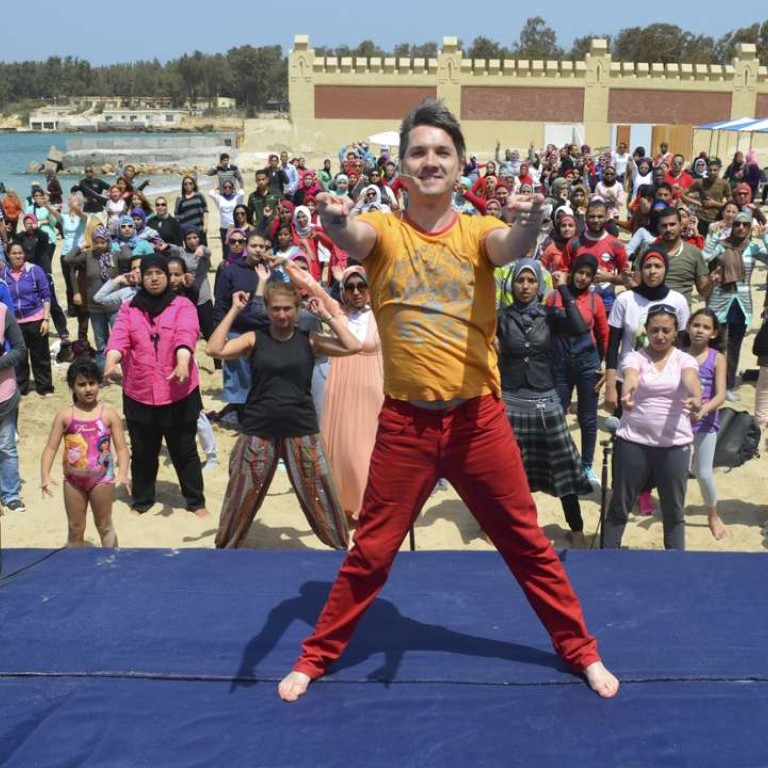
How Gilles Chuyen danced his way from rural France to Bollywood
The Bollywood choreographer, who’s staging a workshop in Hong Kong, had a happy but isolated childhood in a French village, but everything changed when he discovered dance and moved to India
RURAL IDYLL I was born in the south of France, in a little village by a forest, and had a very secure and lovely childhood. I was a solitary child and didn’t have many friends, but I was happy. I loved playing the piano, painting, singing and dancing. The first dance lessons I attended were for southern French folk dancing. I later took up modern jazz and ballet.
GO EAST I’m a seeker – I’ve always had questions about what is life, what is destiny, what is choice. I was drawn to Asia from an early age because I sought answers to these questions. It felt natural to look to that part of the world because I’m a quarter Vietnamese. I love having a Vietnamese surname. When I graduated from university, in the mid-1990s, French people had to do a year of national service. There was an option to go overseas, so I applied for a job in the cultural section of the French embassy in New Delhi. I moved to India when I was 24, and I’ve been there ever since.

JOLLY BOLLY I study, perform, teach and choreograph many styles of dancing, but the style I enjoy teaching the most is Bollywood. For me, Bollywood is pure joy. My first Bollywood commission was for a show staged in Edinburgh, Scotland. After that, other offers to work with the Bollywood dance style started coming my way. It has caused a significant shift in me. I used to take a purely intellectual approach to the arts. Bollywood takes you out of the head and back into the heart. It reminds me of the simple joy of music and movement, and makes me feel like a child again. It’s larger than life and it’s about love and dreams and celebration.
MAKING MOVES The choreography process starts with the song lyrics. I transform the words or phrases of Bollywood songs into physical movements – using an abhinaya, which is a facial expression that depicts a mood, and mudras, which are hand gestures. This culture of translating words into movements has its roots in Indian classical dance. The dance style for each Bollywood song is influenced by the type of music, and which part of India it comes from. For example, bhangra, which comes from Punjab, is a folk music that has become very popular. If the song is bhangra style, with lots of drums, I’ll use bhangra dance-inspired movements. For an international flavour, Bollywood also taps into Western forms, such as ballet, salsa and hip hop. First, I work out the signature step of the dance. This relates to the key word of the song and it should be a simple action that everyone – not just professional dancers – can do. Then I build it from there.

FLASH DANCE I love to run flash mobs that are free public Bollywood workshops. They take place outside, in public spaces, and have a spontaneous, impromptu feel. I’ve flash-mobbed in front of the Museum of Contemporary Art, in Chicago, on the beach in Tel Aviv and outside the opera house in Cairo. In Hong Kong and China, people are often a little shy. In Africa, people love the rhythms and join in easily. Recently, I held one outside the Sydney Opera House. A young Chinese couple was there having wedding photos taken. She was in her bridal gown and he in a tuxedo, but they joined in, which was wonderful.
GOOD VIBRATIONS My workshop takes stamina. Because it’s so much fun and there’s music playing, the body goes into a trance. People don’t notice the time flying by and then realise they have been dancing for three hours straight. Afterwards, they feel like they’ve had a proper cardio workout. During the event, everyone merges into a pool of fun and creativity and togetherness. The celebratory atmosphere helps people to put aside their fear and self-consciousness. Everyone feels connected by the wave of joy and celebration. After the workshops I can feel a major difference in the vibration of the participants. Everyone is uplifted and open and happy. People smile and laugh together, and exchange hugs and photographs. The walls of individuality break down and the community comes together. People always come up to me afterwards and say, “Something just happened. I don’t know what!” That’s exactly what I’m aiming for.
Gilles Chuyen will run a Bollywood Dance Workshop at the Ovolo Southside Hotel, in Wong Chuk Hang, on Wednesday as part of the India by the Bay festival.

